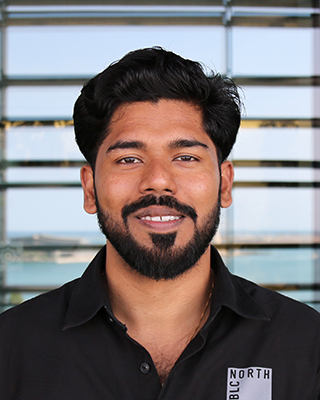



The hydrophobic interaction refers to a mutually attractive force experienced by hydrophobic surfaces or molecules across water. At the molecular scale, it drives the self-assembly of lipid vesicles and micelles and accelerates interfacial chemical reactions. At the macroscale, it confers upon numerous plants and insects the ability to repel water and is harnessed in practical applications, such as water-proofing and desalination. However, despite its ubiquity and significance, mechanistic insights into the hydrophobic interaction between macroscopic surfaces remain unclear. Here, we investigate the consequences of nuclear quantum effects (NQEs) in water on the hydrophobic interaction. Our experiments reveal for the first time that hydrophobic surface forces are ~ 10% higher in light water (H2O) than in heavy water (D2O) even though macroscopic measurables, such as the interfacial tensions and contact angles are indistinguishable. This is the first-ever experimental demonstration of nuclear quantum effects at play in modulating hydrophobic surface forces. Towards practical applications, we investigated the partitioning of small, amphiphilic molecules onto our molecularly smooth hydrophobic surfaces. These scenarios are relevant in wastewater treatment, bioresource processing, fermenter broths, and food & beverage industries.
Sreekiran Pillai joined KAUST as a Ph.D. student under the supervision of Professor Himanshu Mishra in Fall 2015. He received his BTech degree from the Government Engineering College, Calicut and an MTech degree from Indian Institute of Technology, Bombay. Pillai & co-workers were the first to experimentally unveil the signature and consequences of nuclear quantum effects on hydrophobic forces between macroscopic surfaces at normal temperature and pressure. This work appeared on the cover of the Journal of Physical Chemistry Letters and has been featured by numerous online platforms. Sreekiran also investigated partitioning of small, amphiphilic molecules at water-hydrophobe interfaces, yielding new insights into the fouling of membranes and cleaning protocols. He has presented these findings at prestigious meetings, including the Gordon Research Conference on Liquids (2018), ACS Colloids Meeting (2019), and the Australasian Colloids and Interface Society Meeting (2017).